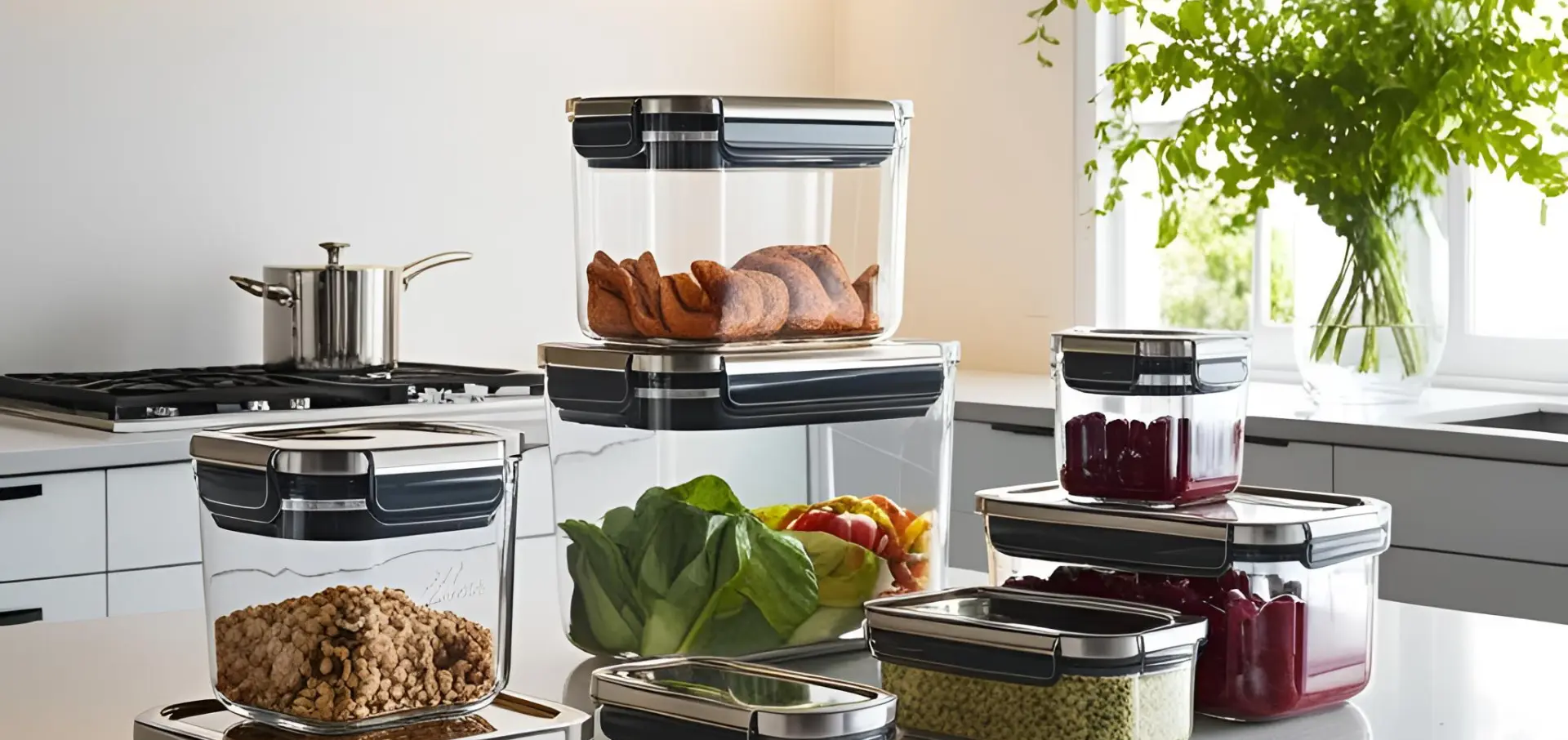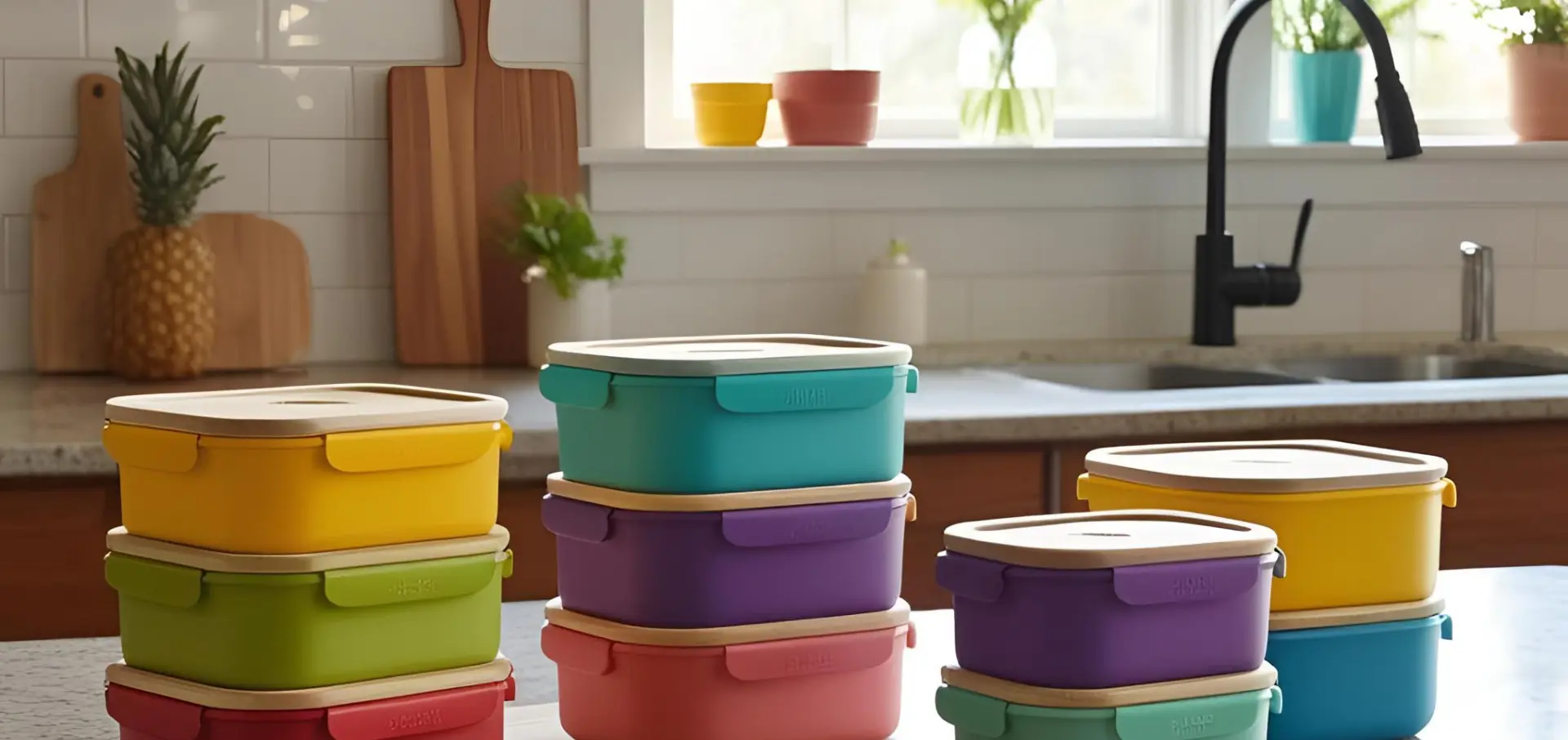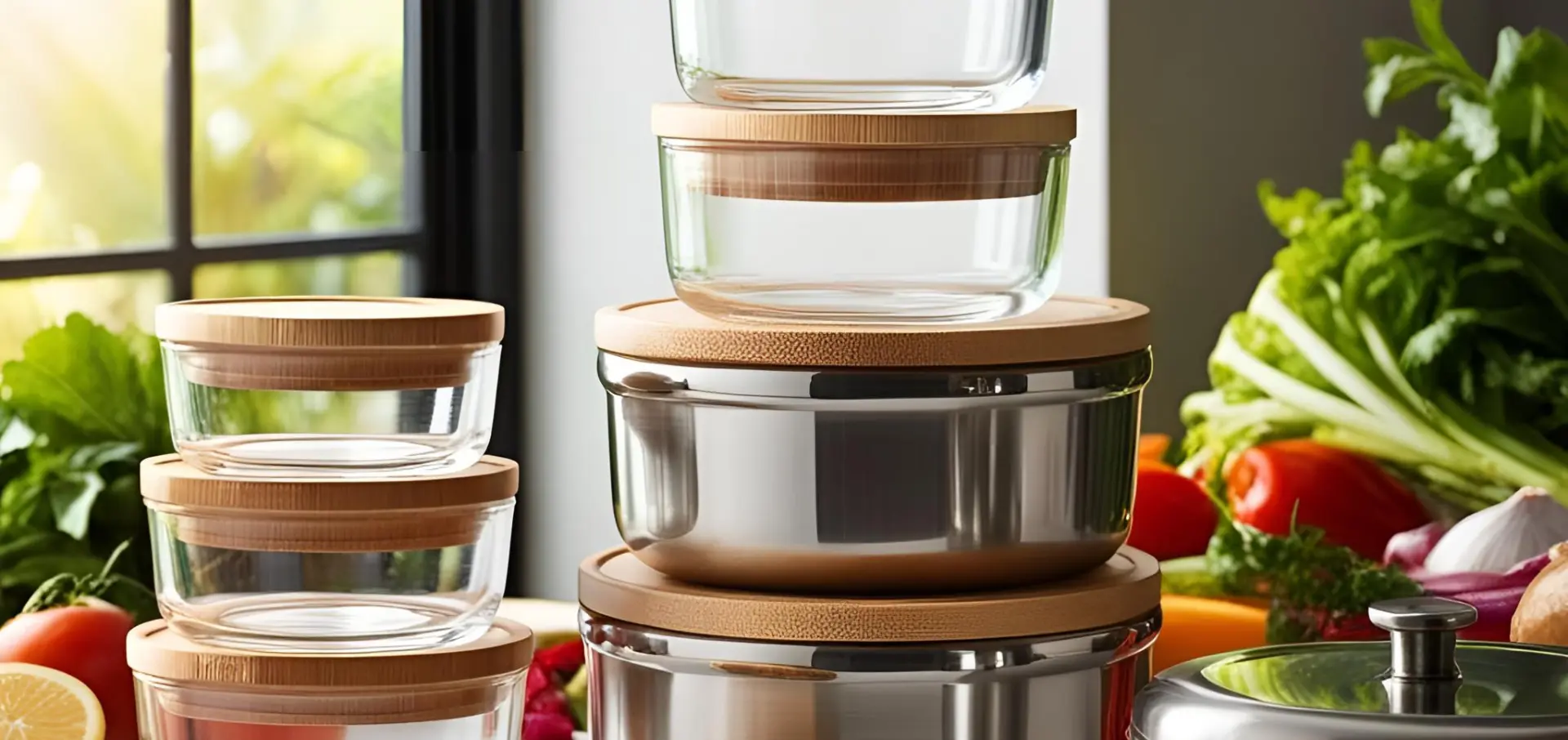You store leftovers every day, but what if your containers are secretly poisoning your food? Most plastic containers look harmless, but many leak harmful chemicals like BPA and PFAS into your meals — especially when heated or scratched.
That’s a serious problem. Eating healthy won’t mean much if your food sits in containers that could be making you sick.
The good news? There are safer options. In this post, you’ll discover the best non toxic food storage containers for your family, the materials to avoid, and how to choose containers that keep your food—and your health—safe.
Let’s dive in.
What Is the Healthiest Container to Store Food In?

The healthiest food storage containers are made from glass and stainless steel. Both are non-toxic, reusable, and don’t leach harmful chemicals into your food.
Glass
• Non-porous and doesn’t absorb flavors or odors
• Safe for the microwave, oven, and dishwasher
• Great for both dry goods and liquids
Food-Grade Stainless Steel
• Non-reactive and rust-resistant
• Ideal for lunches, snacks, and dry storage
• Shatterproof and long-lasting
Silicone (Platinum-Grade)
• BPA-free and heat-resistant up to 400°F+
• Flexible for easy storage in tight spaces
• Best for freezer-safe pouches and lids
Avoid containers made from PVC, polystyrene, or plastics with recycling codes #3, #6, or #7. These often contain harmful chemicals.
And don’t be fooled by “BPA-free” labels — many brands replace BPA with similar chemicals like BPS or BPF, which may have the same health risks (source: Environmental Health Perspectives).
What Is the Best Material for Food Storage Containers?
Not all food containers are created equal. If you're aiming for safety, durability, and no chemical leaching, here’s what to know:
Glass
• Top choice for non toxic food storage containers
• Doesn’t absorb smells or stain
• Safe for hot, oily, or acidic foods
• Works in microwaves, ovens, and dishwashers
Stainless Steel
• Lightweight, unbreakable, and non-reactive
• Great for dry storage and on-the-go meals
• No risk of leaching plastics or toxins
Platinum-Grade Silicone
• BPA-free and heat-safe up to 400°F+
• Flexible and perfect for tight storage spaces
• Ideal for freezer bags, lids, and baby food
Bamboo (Use with caution)
• Sounds eco-friendly, but often mixed with melamine or resin
• These additives can release toxins when heated
Pro tip: Look for non toxic food storage containers with lids that use food-grade silicone seals — these help keep food fresher and reduce leaks without relying on plastic snap-on tops.
Why You Shouldn’t Store Food in Plastic Containers

Plastic containers may seem convenient — but they come with hidden health risks.
Here’s why you should think twice before storing food in plastic:
Chemical Leaching
Plastics can release harmful additives like BPA, phthalates, and PFAS into your food — especially when heated or reused (source: Environmental Health Perspectives).
Heat Sensitivity:
Heat speeds up chemical breakdown. That “microwave-safe” label? It doesn’t mean toxin-free.
Scratches & Stains
Old, worn-out containers are even more likely to leach chemicals — and they’re harder to clean properly.
Not Really Recyclable
Most plastic food containers in Canada end up in landfills, not recycling centers (source: Environmental Defence Canada).
Even airtight liquid containers made from plastic lose integrity over time. Safer alternatives, like stainless steel or glass, offer better long-term use and peace of mind.
What Is the Safest Material for Food Storage?
If you want a container that’s safe for both your health and the environment, glass comes out on top. Here’s why:
Why Glass Wins:
• Doesn’t absorb stains or smells
• Withstands high heat (oven, microwave)
• Non-reactive with acidic foods like tomatoes or citrus
• Recyclable and long-lasting
For portable or outdoor storage, stainless steel is the safest non-glass option — it’s tough, chemical-free, and great for lunches or picnics.
Silicone containers also work well, especially when storing liquids or space-saving in the freezer. Look for platinum-grade silicone that’s free of plastic fillers.
Common Toxic Chemicals in Food Storage Containers
Here’s a quick guide to chemicals you should avoid in food containers — especially plastic ones:
• Bisphenol A (BPA) – Found in hard plastics and epoxy resins. Linked to hormone issues.
• Phthalates – Used to soften plastics. Known endocrine disruptors.
• PFAS (forever chemicals) – Sometimes found in coated paper food packaging.
• Styrene – Found in polystyrene containers. Potential carcinogen.
Even “microwave-safe” plastic doesn’t mean “toxin-free.” Heating speeds up chemical migration — especially with oily or acidic foods.
Non Toxic Food Storage Containers With Lids: What to Look For

Looking for safe containers in Canada? Here’s what to check before you buy:
Key Features:
• Labeling: Look for “BPA-free,” “phthalate-free,” and food-safe certifications
• Material: Prioritize glass, stainless steel, or platinum-grade silicone
• Lid Fit: Ensure it seals tight with silicone rings or clips — not just friction fit
• Temperature Range: Must withstand your daily use (microwave, freezer, dishwasher)
• Stackability: Important for fridge/pantry space-saving
Choosing containers with these features helps reduce exposure to harmful chemicals and makes food storage safer for you and your family.
Eco-Friendly Food Containers
Switching to Environmentally Friendly Food Storage Containers doesn’t just protect your health it helps the planet too.
Why Eco-Friendly Containers Matter:
• Less Waste: Reusable containers reduce single-use plastic reliance
• Long-Term Savings: Durable materials cost more upfront but last longer
• Cleaner Recycling: Glass and stainless steel are easier to recycle than plastic
• Healthier Homes: No microplastics or toxic fumes over time
Use glass food jars, silicone pouches, or stainless steel food bottles as part of your regular food storage system. These options are better for the planet and free from the risks of conventional plastic.
Final Thoughts
If you're in Canada and looking for non toxic food storage containers, the right choice is clear — literally.
Glass, stainless steel, and food-grade silicone outperform plastic in both safety and sustainability. With rising concerns about food safety, now’s the time to replace worn-out plastic containers with materials you can trust.
Quick Recap:
• Avoid plastics with #3, #6, or #7 markings
• Use glass or stainless steel for everyday storage
• Check for safety certifications like BPA-free and FDA-approved
• Choose eco-friendly options to protect your health and the environment
You don’t need to overhaul your entire kitchen overnight — but starting with a few quality, non toxic containers is a smart step toward safer, cleaner living.